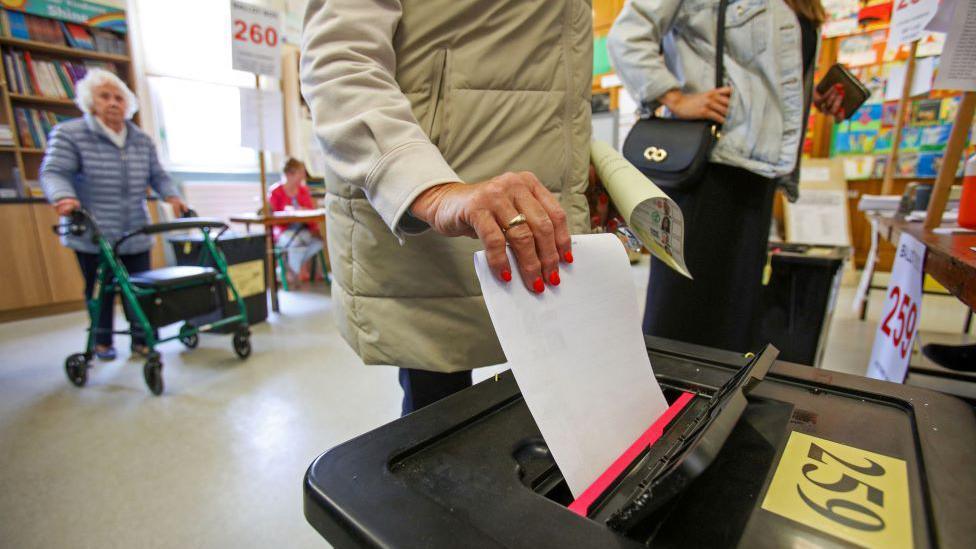How will the Republic of Ireland elect its next parliament?

- Published
The Irish general election on Friday 29 November will decide who will sit in the D√°il, the lower house of the Oireachtas (Ireland's parliament).
Elected members are known as Teachtaí Dála (TDs).
The number of TDs and constituencies will both increase for the 2024 election .
There are now 43 D√°il constituencies (up from 39 in 2020) which will elect between three and five TDs each.
A total number of 174 TDs will be selected, up from 160 in 2020.
The deadline to register to vote in the election is 23:59 local time on Tuesday, 12 November.
How will votes be counted?
Ireland elects its government using a system of proportional representation known as the single transferable vote.
Voters will have the opportunity to rank candidates in their constituency in order of preference, marking their favourite with a number one, a number two beside their next choice and so on.
They can vote for as many or as few candidates as they like.
Candidates will have to reach a certain number of votes in order to be elected.
That number is decided for each constituency using a mathematical formula based on the number of seats available and the number of votes that have been cast.
Counting the ballots takes place in multiple rounds.
Each ballot is initially credited to the first choice.
Once a candidate receives the number of votes required, they are elected and any remaining ballots that are marked with them as first choice are transferred to the second ranked preferences.
Ballots continue to be transferred to the next usable preference until all of the seats in the constituency are filled with candidates who have reached the quota.
What parties are standing in the election?
Politics in the Republic of Ireland was traditionally dominated by Fianna F√°il and Fine Gael.
Both parties emerged following a split in nationalist opinion over the 1921 Anglo-Irish Treaty.
Fianna F√°il was once seen as more centrist, Fine Gael as more conservative, but differences have blurred and both are now seen as centre-right parties.
Sinn Féin, an Irish republican and democratic socialist party, is the main opposition party.
It made significant gains and topped the popular vote, winning 37 seats, while Fianna F√°il won 38 and Fine Gael ended up with 35.
To gain a governing majority, a coalition government was formed between Fianna F√°il, Fine Gael and the Green Party.
Other parties that will put forward candidates for the upcoming election include Labour, Social Democrats, PBP-Solidarity, Independent Ireland and Aont√∫.
When will votes be counted?
Ballot boxes will be sent to the constituency count centre after polls close but counting will not start until the following morning.
The count can sometimes last several days.
How do you register to vote?
Applications can be made online - .
Applicants must be at least 18 years old and be an ordinary resident at an address in the Republic of Ireland.
16 and 17 year olds can also apply to be on a pending elector list to be moved onto the live electoral register when they turn 18, and people who are homeless or have no address can still register to vote by stating that they have "no fixed address".